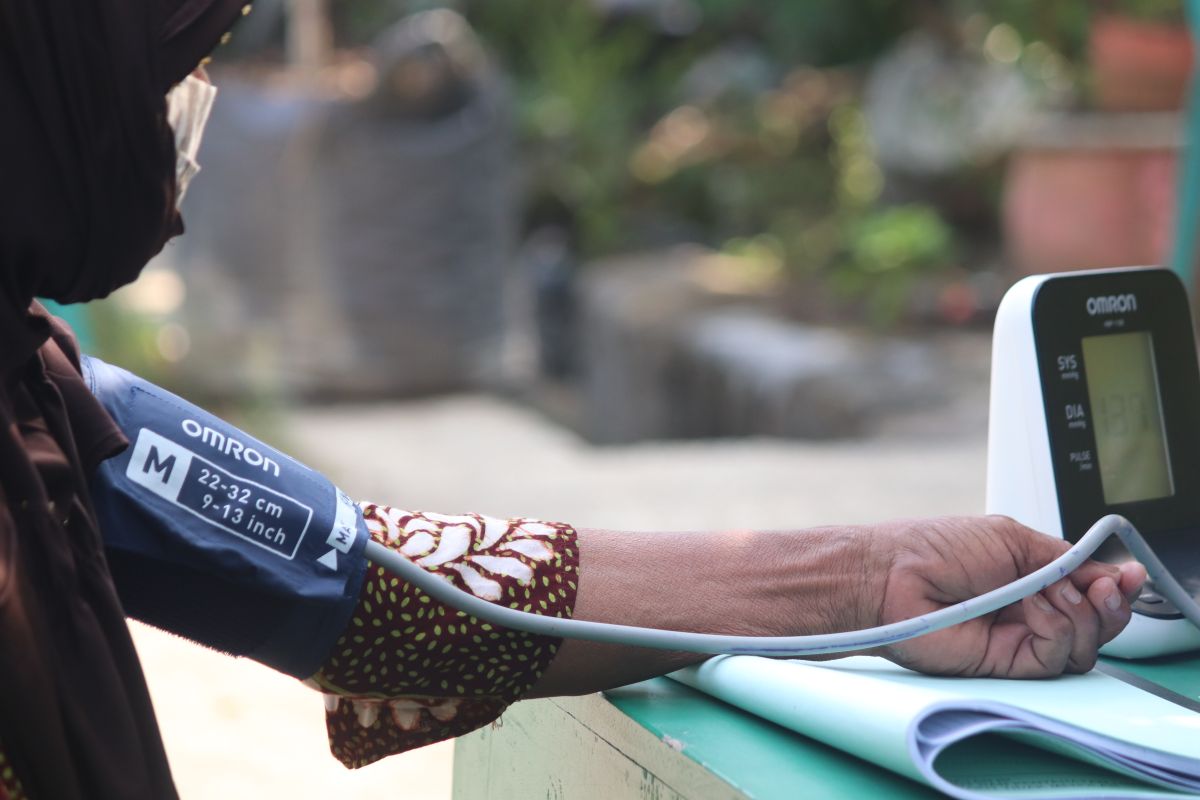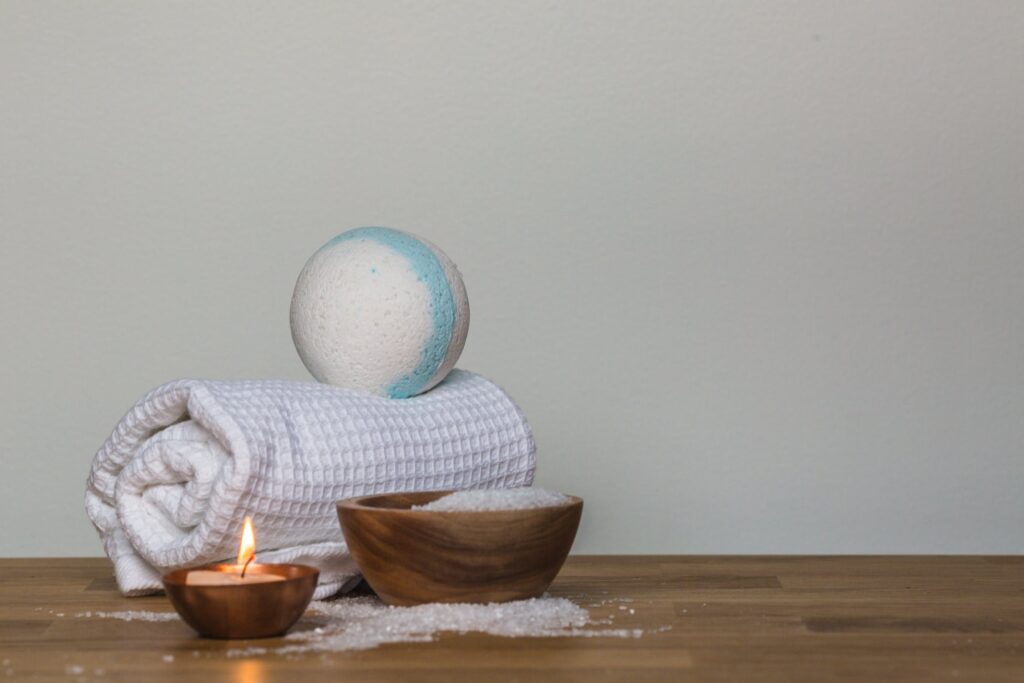Are your joints constantly hurting you? Do you have arthritis or joint discomfort and wonder if a portable sauna could help? In addition to relieving stress, might the gentle heat of a sauna help individuals who suffer from joint pain?
Much talk's been about how portable saunas can help with things like arthritis and joint discomfort. Saunas work by increasing core body temperature, which in turn improves blood flow, which may reduce joint inflammation. The potential for improved circulation may provide short pain relief, making portable saunas an attractive alternative for those looking for non-invasive methods of symptom management.
But how effective are portable saunas? Our forthcoming post will investigate this issue further by analysing relevant scientific literature and reputable opinion sources. We'll get the opinion of a renowned rheumatologist and other experts on whether or not portable saunas can help with arthritis and joint discomfort. We'll go beyond the obvious advantages of portable saunas and help you make a well-informed decision about whether or not to make one a regular part of your health regimen by discussing how to use it and any potential drawbacks you might encounter.
Joint Pain And Arthritis: What You Need To Know?
Millions of individuals all over the world have arthritis and joint discomfort. Understanding these illnesses' origins, manifestations, and outcomes cannot be overstated.
Joint Pain and Arthritis: An Explanation
More than a hundred forms of joint inflammation fall under the umbrella term "arthritis." Pain, edema, stiffness and decreased movement are among the symptoms. Rheumatoid arthritis and Osteoarthritis are the two most common forms.
- Osteoarthritis: Deterioration of the articular cartilage, which cushions the ends of bones in the joints, leads to this form of arthritis. The knees, hips, and spine are the most prevalent damage sites.
- Rheumatoid Arthritis: Rheumatoid arthritis is an autoimmune condition, while osteoarthritis is not. When the immune system erroneously targets the synovium (the membrane lining that surrounds the joints), inflammation and possible injury to the joints can result. Arthritis' Most Typical Symptoms:
- Decreased range of motion
- Fatigue and weakness
- Joint pain and tenderness
- Swelling around the joint
- Stiffness, particularly in the morning
Commonness and Everyday Effects
Although arthritis and joint pain are frequent in the elderly, they can affect persons of any age. Over 350 million people worldwide have arthritis, making it a major public health issue, according to the World Health Organisation.
Arthritis can have a serious effect on daily living. Mobility is impaired, and daily activities become more challenging when living with persistent pain and stiffness. Arthritis pain is a common cause of worry, sadness, and disturbed sleep. Joint pain can cause people to be less active, leading to weight gain and a sedentary lifestyle, which are associated with an increased risk of disease.
Arthritis can be debilitating, but with the right care, those who suffer from it can still thrive. Modifications to physical therapy, lifestyle, medication, and even surgery may be necessary to manage symptoms and restore joint function. Arthritis can significantly impact daily living, but this impact can be lessened with early diagnosis and appropriate management.
Methods Used Historically In Treatment
Medical care has long relied on time-tested, tried-and-true methods for treating various medical ailments. Medication, physical therapy, and behavioural modifications are just a few of the modalities included in these attack plans, designed to reduce symptoms and boost health. While there is no denying the success rate of these techniques, it is equally crucial to recognise their limitations and possible negative effects.
Medication:
When dealing with a variety of health problems, medication is frequently the first line of defence. Antibiotics and painkillers are just two examples of medicinal therapies that can bring fast relief. However, it is important to remember that drugs may not always address the underlying issue. Furthermore, some medications might cause side effects ranging from mildly uncomfortable to life-threatening. Therefore, adopting a new pharmaceutical regimen requires serious thought and discussion with a medical practitioner.

Physical Therapy:
People with physical injuries or diseases often benefit from physical therapy's ability to restore function while alleviating discomfort. Physical therapists work to enhance functional capacity and quality of life through the use of therapeutic exercises, stretches, and manual treatments. Physical therapy is typically safe and helpful, although improvement can be delayed and calls for dedicated patient participation. Finding a competent and experienced therapist is crucial for successful treatment.
Lifestyle Changes:
Modifying one's way of life by eating better, exercising frequently, and dealing with stress can profoundly affect health. Changes in behaviour are commonly suggested as a treatment for long-term health problems. It takes commitment and patience, but these adjustments can pay off in the long run. However, it's crucial to remember that adjusting one's way of life isn't always enough to solve health problems.
Limitations and Side Effects:
There is no denying that conventional treatment methods have enhanced the quality of life for innumerable people. Symptoms may be treated with medication, but the underlying issue may not be. Furthermore, side effects can vary from being mildly annoying to potentially life-threatening. It may take time for physical treatment and a change in lifestyle to be effective, and they may not be appropriate for everyone.
Is An Infrared Sauna Good For Arthritis?
Your search for "Is infrared sauna good for my rheumatoid or osteoarthritis?" led you here. The quick response? Yes! Arthritis causes discomfort, but infrared therapy can assist with the pain, swelling, and stiffness. People living with Arthritis can reap the following benefits by using an infrared sauna:
- Detoxification: An infrared sauna is one of the most effective ways to sweat it out and purge toxins. Sweating in an infrared sauna has been shown to release 20% of your body's toxins. On the other hand, the sweat produced in a conventional Finnish sauna contains just about 3% toxins. Since an infrared sauna allows your body to sweat out all toxins and improves general blood flow, it can make a big difference in treating arthritis by lowering inflammation.
- Pain: Pain alleviation from infrared sauna heat has been scientifically confirmed. The persistent pain and general discomfort in the joints that people living with arthritis often endure are considerably alleviated by heat therapy.
- Stiffness: The infrared heat from a sauna can help loosen up your stiff joints by relaxing your muscles and increasing blood flow.
- Range of Motion: An infrared sauna can help loosen you up, relax your muscles, and improve your circulation. The upshot is greater flexibility and movement, which is a huge boon for people with arthritis.
- Circulation: By enhancing blood flow, infrared saunas can help bring oxygenated blood to arthritic joints.
- Stress: Arthritis flare-ups can be triggered by various factors, but stress is prevalent. Taking time out of the day to relax and practise stress-prevention techniques like using an infrared sauna is beneficial.
- Immune System: A robust immune system is another defence against arthritis attacks. Regular use of a sauna, particularly an infrared sauna, has been shown to have favourable effects on immunological function, and this may be especially true for people with arthritis.
- Sleep: Pain and stress brought on by conditions like arthritis can disrupt a person's sleep schedule and leave them exhausted throughout the day. Sleep quality will improve after regular sessions in an infrared sauna.
How Does Going To A Sauna Help With Joint Pain?
What do you do when the demands of work and the elements take a toll on your arthritic knees? Using a sauna has been shown to provide temporary relief from joint pain. It's important to remember that sauna use isn't appropriate for everyone, so it's best to check with your doctor first. It is also vital to use the sauna to complement any other therapies (such as medicine, topical treatments, physical therapy, etc.) you may be receiving. Some of the saunas' most important potential benefits for relieving joint pain are outlined below.
Stress Reduction Inducing
The infrared rays permeate the skin and cause a calming effect. This results in a reduction of tension in your muscles and tendons.
Boosting Blood Flow
The goal of using an infrared sauna is to increase your body temperature. This causes the blood vessels to widen. Because of this, more nutrient- and healing-rich blood may reach all body parts (including your joints).

Initiating the Generation of White Blood Cells
Increasing one's core temperature creates an environment similar to a fever, stimulating the immune system. Your body responds to this by making more white blood cells. Pain is momentarily alleviated when more white blood cells circulate throughout the body, reducing inflammation and swelling around the joints.
Portable Sauna Use Considerations
Since only some have access to a permanent sauna setup, portable saunas have become increasingly popular. There are several considerations to make, especially for people with medical issues, when using these little units for relaxation and possible health advantages. Making safety a priority and consulting an expert are two ways to guarantee a pleasant day in a portable sauna.
Medical Safety Precautions
It's critical to remember that people's bodies react differently to heat. Extra care should be used when using a portable sauna by people with heart or lung disorders, severe allergies or sensitivity to heat. Some precautions to take into account are as follows:
- Consult Your Doctor: Always check with your doctor before adding anything new to your health routine, including portable sauna sessions. Based on your medical history, they can advise you on whether you should use a sauna.
- Monitor Duration and Temperature: Take care of how long and hot you keep the sauna. Be cautious of how your body reacts and begin with shorter sessions at lower temperatures before working up to higher ones.
- Stay Hydrated: Increased sweating during a sauna session may contribute to fluid loss and dehydration. To prevent dehydration, sauna goers should drink lots of water before and after their session.
- Avoid Alcohol and Medications: Avoid consuming alcohol or taking other drugs that could affect your body's temperature regulation before entering the sauna.
- Listen to Your Body: If you start to feel lightheaded, nauseous, or uneasy while in the sauna, you should get out of there right away and calm down.
Seeking the Advice of a Medical Expert
Talking to a doctor before beginning any new therapy or wellness practice, including utilising a portable sauna, is important. Their knowledge will help you better understand how sauna use may affect your specific health situation. Here are some reasons why it's important to talk to a doctor:
- Personalized Advice: Based on your health history, present condition, and ongoing therapies, medical specialists can provide you with individualised advice.
- Identifying Red Flags: Sauna use may not be recommended or safe for you based on information your doctor can provide.
- Risk Management: Talking to your doctor before using a sauna will help you understand the potential risks and make the best decision for your health.
FAQs About Sauna
A portable sauna is a compact device that creates a heated environment to induce sweating. It works for arthritis relief by increasing blood circulation, reducing muscle tension, and promoting relaxation, which can help alleviate pain and stiffness in joints.
Yes, using a portable sauna improperly can worsen arthritis symptoms. Prolonged or excessively high heat can lead to dehydration, overheating, and potential exacerbation of joint inflammation. It's crucial to follow manufacturer guidelines and consult a medical professional before using the sauna, especially if you have severe arthritis.
Portable saunas often have adjustable temperature settings. For arthritis relief, a temperature range of 100-130°F (37-54°C) is commonly recommended. However, individual tolerance levels vary, so it's essential to start at a lower temperature and gradually increase as needed.
Pregnant individuals and those with certain medical conditions, such as cardiovascular issues, should avoid using portable saunas without consulting a healthcare professional. The increased heat can affect blood pressure and circulation, potentially posing risks to these groups.
No, a portable sauna should not replace traditional medical treatments for arthritis. It can complement other treatments by providing temporary relief and improving mobility. Always consult with a doctor to determine the best course of action for managing arthritis symptoms.
Conclusion
Portable saunas have been discussed as potential solutions for arthritis and joint discomfort, as they work by increasing core body temperature and improving blood flow, potentially reducing joint inflammation. These non-invasive methods of symptom management can provide short pain relief and are an attractive alternative for those seeking non-invasive methods of symptom management. However, the effectiveness of portable saunas is still being investigated, with the opinions of renowned rheumatologists and other experts.
Joint pain and arthritis are common and affect millions of people worldwide. Over 350 million people worldwide have arthritis, making it a major public health issue. Arthritis can have a significant impact on daily living, affecting mobility, daily activities, and daily activities. It can cause worry, sadness, and disturbed sleep, as well as weight gain and a sedentary lifestyle.
Medication, physical therapy, and behavioral modifications are some of the modalities used in traditional treatment plans. However, it is important to recognize their limitations and possible negative effects. Medication is often the first line of defense for various health problems, such as antibiotics and painkillers. However, it is important to remember that drugs may not always address the underlying issue and may cause side effects ranging from mildly uncomfortable to life-threatening.
Physical therapy is often the first line of defense for people with physical injuries or diseases, as it restores function while alleviating discomfort. Physical therapists work to enhance functional capacity and quality of life through therapeutic exercises, stretches, and manual treatments. However, improvement can be delayed and requires dedicated patient participation. Finding a competent and experienced therapist is crucial for successful treatment.
Lifestyle changes, such as eating better, exercising frequently, and dealing with stress, can profoundly affect health. However, it is crucial to remember that adjusting one's way of life is not always enough to solve health problems.
Limitations and side effects of conventional treatment methods include the potential for side effects to vary from mildly annoying to potentially life-threatening. It may take time for physical treatment and lifestyle changes to be effective, and they may not be appropriate for everyone. In conclusion, while portable saunas may provide some relief for arthritis and joint discomfort, it is essential to consider their limitations and potential side effects when considering their use in symptom management.
Infrared saunas have been shown to be beneficial for people with arthritis, as they can help alleviate pain, swelling, and stiffness. These saunas offer several benefits, including detoxification, pain alleviation, stiffness, range of motion, circulation, stress, immune system, and sleep.
Swimming in an infrared sauna releases 20% of the body's toxins, making it an effective way to sweat out toxins and improve blood flow. Pain alleviation from infrared sauna heat has been scientifically confirmed, and it can help loosen up stiff joints by relaxing muscles and increasing blood flow. The range of motion in an infrared sauna can also help loosen up muscles and improve circulation, leading to greater flexibility and movement.
Circulation in an infrared sauna can bring oxygenated blood to arthritic joints, reducing inflammation and swelling. Regular use of an infrared sauna can also help improve sleep quality, as pain and stress brought on by conditions like arthritis can disrupt a person's sleep schedule.
Portable saunas have become increasingly popular, but it is important to consult a doctor before using them for relaxation and possible health advantages. Some of the saunas' most important potential benefits for relieving joint pain include stress reduction, boosting blood flow, and initiating the generation of white blood cells.
When using a portable sauna, it is crucial to consult your doctor, monitor the duration and temperature, stay hydrated, avoid alcohol and medications, and listen to your body. Seeking the advice of a medical expert before starting any new therapy or wellness practice is important, as their knowledge can help you understand how sauna use may affect your specific health situation.
Personalized advice: Medical specialists can provide personalized advice based on your health history, present condition, and ongoing therapies. Identifying red flags: Sauna use may not be recommended or safe for you based on information your doctor can provide.
Risk management: Talking to a doctor before using a sauna can help you understand the potential risks and make the best decision for your health. Overall, infrared saunas offer numerous benefits for people with arthritis, including detoxification, pain alleviation, flexibility, range of motion, circulation, stress, and sleep.
Content Summary:
- Do you have arthritis or joint discomfort and wonder if a portable sauna could help?
- In addition to relieving stress, might the gentle heat of a sauna help individuals who suffer from joint pain?Much talk's been about how portable saunas can help with things like arthritis and joint discomfort.
- Saunas work by increasing core body temperature, which in turn improves blood flow, which may reduce joint inflammation.
- The potential for improved circulation may provide short pain relief, making portable saunas an attractive alternative for those looking for non-invasive methods of symptom management.
- Our forthcoming post will investigate this issue further by analysing relevant scientific literature and reputable opinion sources.
- We'll get the opinion of a renowned rheumatologist and other experts on whether or not portable saunas can help with arthritis and joint discomfort.
- Arthritis can have a serious effect on daily living.
- Mobility is impaired, and daily activities become more challenging when living with persistent pain and stiffness.
- Arthritis pain is a common cause of worry, sadness, and disturbed sleep.
- Joint pain can cause people to be less active, leading to weight gain and a sedentary lifestyle, which are associated with an increased risk of disease.
- Arthritis can be debilitating, but with the right care, those who suffer from it can still thrive.
- Modifications to physical therapy, lifestyle, medication, and even surgery may be necessary to manage symptoms and restore joint function.
- Arthritis can significantly impact daily living, but this impact can be lessened with early diagnosis and appropriate management.
- Medical care has long relied on time-tested, tried-and-true methods for treating various medical ailments.
- Medication, physical therapy, and behavioural modifications are just a few of the modalities included in these attack plans, designed to reduce symptoms and boost health.
- Medication: When dealing with a variety of health problems, medication is frequently the first line of defence.
- Antibiotics and painkillers are just two examples of medicinal therapies that can bring fast relief.
- However, it is important to remember that drugs may not always address the underlying issue.
- Therefore, adopting a new pharmaceutical regimen requires serious thought and discussion with a medical practitioner.
- Physical Therapy: People with physical injuries or diseases often benefit from physical therapy's ability to restore function while alleviating discomfort.
- Finding a competent and experienced therapist is crucial for successful treatment.
- Changes in behaviour are commonly suggested as a treatment for long-term health problems.
- Symptoms may be treated with medication, but the underlying issue may not be.
- It may take time for physical treatment and a change in lifestyle to be effective, and they may not be appropriate for everyone.
- Arthritis causes discomfort, but infrared therapy can assist with the pain, swelling, and stiffness.
- People living with Arthritis can reap the following benefits by using an infrared sauna:Detoxification: An infrared sauna is one of the most effective ways to sweat it out and purge toxins.
- Taking time out of the day to relax and practise stress-prevention techniques like using an infrared sauna is beneficial.
- Using a sauna has been shown to provide temporary relief from joint pain.
- It's important to remember that sauna use isn't appropriate for everyone, so it's best to check with your doctor first.
- Some of the saunas' most important potential benefits for relieving joint pain are outlined below.
- The goal of using an infrared sauna is to increase your body temperature.
- Making safety a priority and consulting an expert are two ways to guarantee a pleasant day in a portable sauna.
- Some precautions to take into account are as follows: Consult Your Doctor: Always check with your doctor before adding anything new to your health routine, including portable sauna sessions.
- Talking to a doctor before beginning any new therapy or wellness practice, including utilising a portable sauna, is important.
- Risk Management: Talking to your doctor before using a sauna will help you understand the potential risks and make the best decision for your health.






